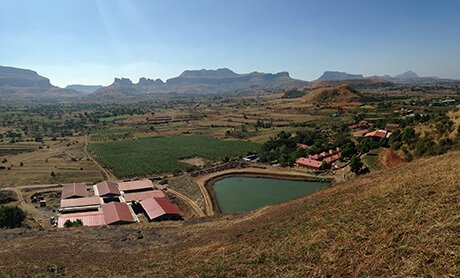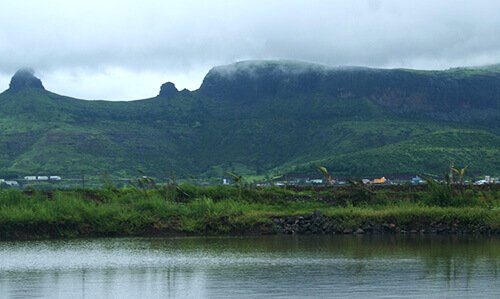Practice Quiet Breathing (Windows Media Audio)
the inside activities of the body are due to the ever going process of combustion or oxidation in the body. And this process of combustion works with the help of the respiration and the blood circulation. Therefore, the moment there is internal or external movement of the body, it affects the process of blood circulation and respiration. As a result of this increasing the speed of the breathing provides the needed oxygen for the concerned movements. The speed of the breathing is increased in accompaniment to the speed of the movements of the body. Therefore it is noticed that the breathing is smooth or quiet, when there is no bodily movement or when it is in its normal or relaxed state. Such breathing is called Quiet Breathing. No control of any sort is kept on this breathing. Normally after taking up the final position of any Asana and then stabilizing, this position for some time, the quiet breathing of this type becomes natural. And in order to have this type of breathing one should relax the body as much as possible during the period of the stabilized Asana position.
Practice Deep Breathing (Windows Media Audio)
Since we want to control the breathing after studying the process or system of respiration, it is better to try deep breathing as the first state in that direction. We do not control the process of quiet breathing. But the control is to be exercised while practicing deep breathing. For this, two things are to be considered chiefly : First, the movements concerned with inhaling and exhaling are to be controlled in order to further slow down the breathing, at the same time the need of oxygen for the body is to be lessened, so that the speed of breathing can further, slowdown. The constitution of the body is such that if the need or use of oxygen is not reduced, it becomes difficult or rather impossible to control the process of breathing. The easy way to reduce the need of oxygen is to stop the movements of the body and try to relax all the muscles. Obviously, while practicing deep breathing, it is necessary to keep the body in the stable and relaxed position. And this is possible in any sitting position of meditation. However, Padmasana is the best Asana position. The other preferable Asanas in sitting position are Vajrasana and Swastikasana. But once the Asana is taken up, it should be blissfully stabilized until the study of breathing is over. Any strain anywhere will cause distraction in breathing. Therefore the Asana position should be stable and pleasant, while doing meditation. The hands should be in Dhyana Mudra. The straight upright position of the neck, the spine and closed eyes help in attaining concentration without making any movements. Relax the muscles and concentrate fully on breathing. This will slow down the breathing and bring it to a particular point of speed and will get stabilized at that point. This is the ideal state of smooth breathing. This is free from any control. No movement is seen on the chest. It is confined to the movement of the muscles of the abdomen and the lungs. After having such smooth breathing for some time, the movements of the abdomen and the lungs should be brought under the control of the mind, and the movement should further be slowed.
The practice of deep breathing begins after deliberately having inhaling and exhaling at ease. Initially one should practice prolonged inhaling and prolonged exhaling. The constant practice enables the person in having repetition of such prolonged inhaling and exhaling. After some time it becomes difficult to have more repetitions of prolonged inhaling and exhaling. At such point one should come to natural smooth breathing. After some rest, deep breathing should begin again. Practicing deep breathing in this way for some days, attempt should be made to bring time limit to the period of inhaling and exhaling. Initially one should practice prolonged inhaling and prolonged exhaling. The constant practice enables the person in having repetitions of such prolonged inhaling and exhaling. After some time it becomes difficult to have more repetitions of prolonged inhaling and exhaling. At such point one should come to natural smooth breathing; after some rest, deep breathing should begin again. Practicing deep breathing in this way for some days, attempt should be made to bring time limit to the period of inhaling and exhaling. Initially equal time should be allotted for inhaling and exhaling. That is, the time given to inhaling, the same amount of time is given to exhaling. This is called deep breathing, with equal time and speed : "Samakal, Samagati, Deergh Shwasan". While practicing deep breathing, the numbers should be counted mentally. For instance, if inhaling takes four counts, the same period should be taken for exhaling. On such occasion normally it is noticed that exhaling completes at the second or the third point. So one should be alert regarding the speed of exhaling right from the beginning and try to maintain the balance. Of course after a few day's practice one successfully adapts this system. To maintain the time record, one can use the second system in a watch. The study of deep breathing with equal time and speed should continue for 10 to 15 minutes without pause. Apparently this system seems easy, but that is not so. One finds oneself out of breathing. But as said earlier constant practice helps in acquiring this system successfully.
After practicing deep breathing with equal time and speed successfully, one should start studying it by increasing the time for exhaling. If inhaling (Puraka) is in four seconds, then exhaling (Rechaka) shall take 5 to 6 seconds instead of four. This needs special efforts. When a person succeeds in doing inhaling and exhaling at the ratio of 1: 1 for 10 to 15 minutes, he should double the time for exhalation. The ideal ratio for inhaling-exhaling is 1: 2. Many times or Pranayama also the same ratio is stated. If the period for inhaling goes up to four seconds, then exhaling should be lengthened up to eight seconds. But both the operations should have the equal speed. That is, the speed of inhaling from the first second to the fourth one and the speed of exhaling from the first second to the eighth one should be the same. Of course it is not possible until one acquires control over the breathing system. One should practice deep breathing in the aforementioned way for 10 to 5 minutes at a stretch. In deep breathing one can further progress by increasing the period of inhaling and proportionately that of exhaling. That is the period of inhaling can be increased gradually from five to fifteen seconds and naturally that of exhaling from ten to thirty seconds. Observing this system carefully one can have as many repetitions as one can. In this system holding of breath is not included and hence this operational system is written as 1:0:2. The practice of deep breathing not only strengthens the lungs but also greatly helps in increasing the concentration of the mind. Then, there is a tremendous increase in zeal in day-to-day work owing to the good breathing and nice blood circulations, the twin gifts of deep breathing. Besides one starts acquiring control over the process of breathing.
Practice Fast Breathing (Windows Media Audio)
When the speed of quiet breathing is deliberately reduced, the result is deep breathing; on the contrary, if that speed is willfully increased, then the result is fast breathing. However, here the short timed inhaling-exhaling is not implied. It is expected that one should increase the speed of breathing by inhaling and exhaling fully. One has to practice to continue the cycle of quick breathing with constant practice. This sort of breathing is easy to understand & easy to practice. Naturally, its benefits are also limited. The fast breathing clears the nasal passage and gives a good exercise to the parts involved in the breathing system. At times while practicing quick breathing, one feels whirling sensation in the head. But one should not bother about it. On such occasions, stop fast breathing and begin quiet breathing. There occurs no problem, once there is sufficient practice and habit of this type of breathing. This breathing is also practiced in Padmasana or Vajrasana. Before actually beginning the study of deep breathing, one should practice quick breathing for 2-3 minutes in order to get the nasal passage cleared, fast breathing need not be done for a longer period.
After examining and understanding these basic systems of breathing, let us turn to the supplementary types of breathing: The breathing passage in the nasal cavity is divided into two owing to the mid partition between two nasal cavities, viz. the left and the right.
In Yoga, the left nasal cavity is called "Chandra Nadi" (The moon passage) or "Ida Nad"" and the right nasal cavity is known is "Suryanadi" (The sun passage) or "Pingala Nadi". Inhaling (Puraka) and Exhaling (Rechaka) can be done either through one of these nasal cavities or with both of them. The supplementary types of breathing are based upon these two nasal cavities. In this system of breathing one nasal cavity is kept closed, while the other one open. For this purpose the fingers of the right palm are arranged in a special manner. This special position of the fingers is called "Pranava Mudra", i.e., the position of Pranayama.
| COURSE | Venue |
Phone - +91-9822770727
E-mail - yoga@yogapoint.com or yogapoint108@gmail.com

Yoga Vidya Dham, Kaivalya Nagari,
College Road, Nashik - 422005.
Maharashtra, India.
Phone - +91-9822770727 (for courses in ENGLISH)
+91-253-2318090 (For courses, in HINDI or MARATHI)
(Please call during 9.00 AM to 5 PM Indian Time)
E-mail - yoga@yogapoint.co or yogapoint108@gmail.com
Village Talwade, Trimbak, Nasik
Maharashtra,India.
Phone - +91-9822770727
E-mail - yoga@yogapoint.com or yogapoint108@gmail.com
